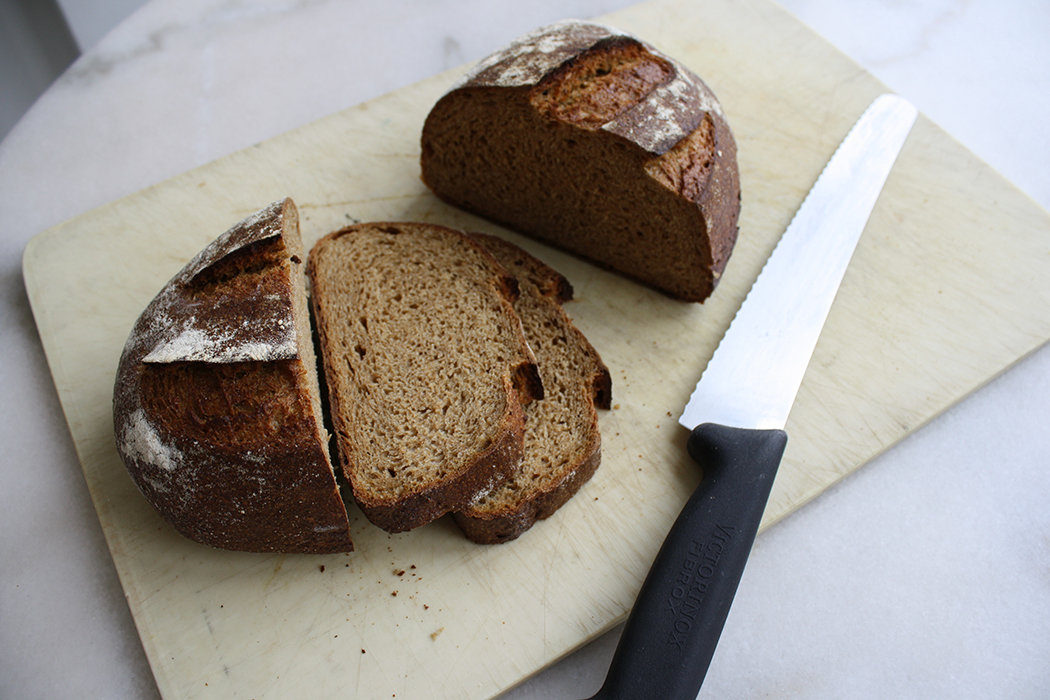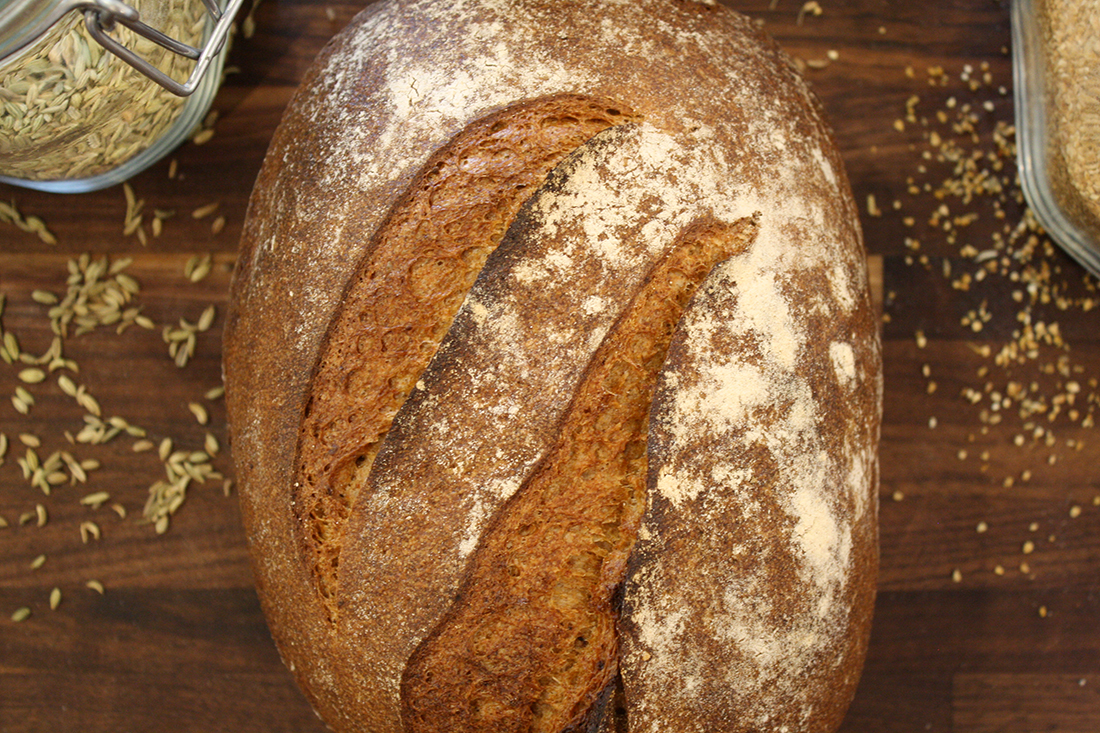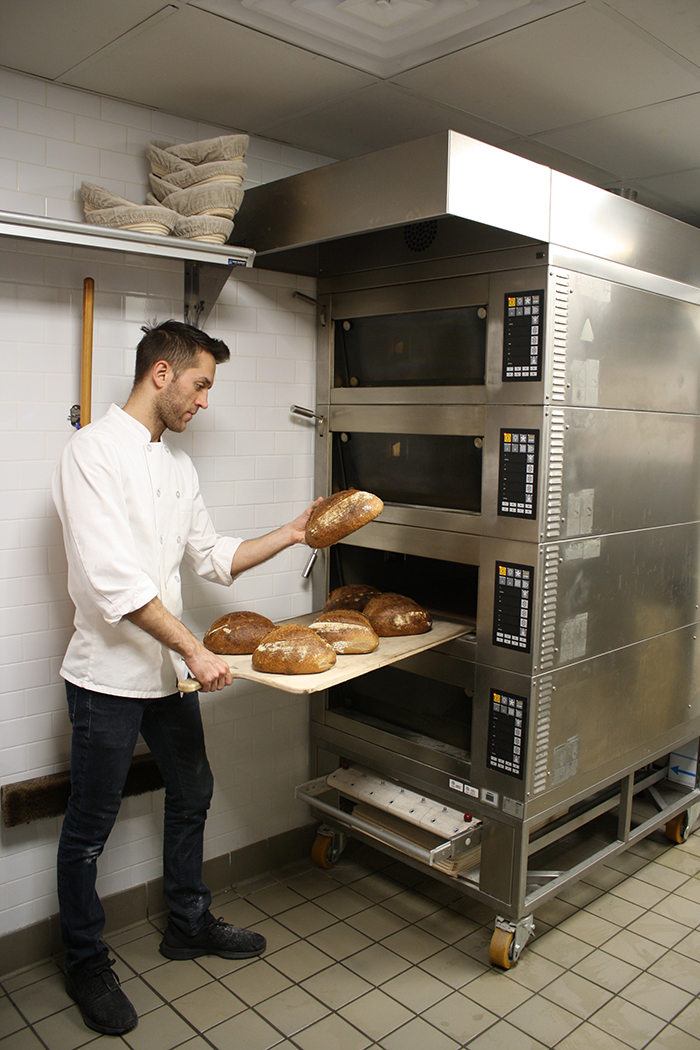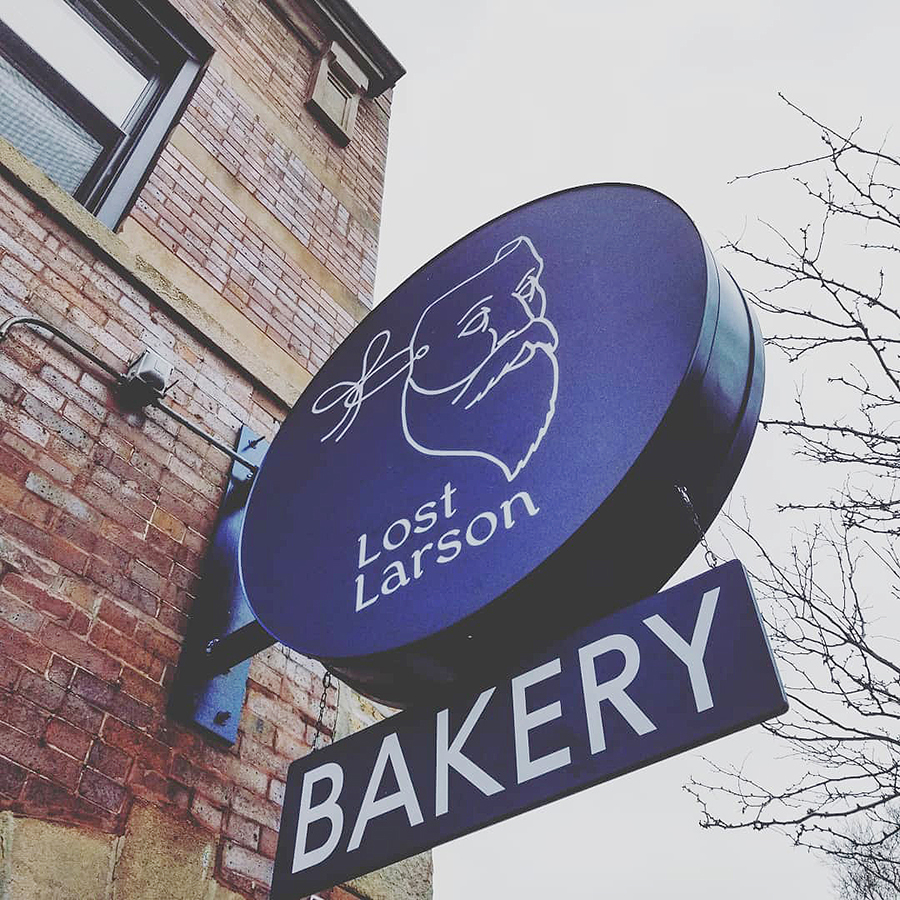Lost Larson Limpa
Andersonville, the historically Swedish neighborhood of Chicago, has welcomed the next generation of tradition builders into their midst.
-
 Andersonville, the historically Swedish neighborhood of Chicago, has welcomed the next generation of tradition builders into their midst. Meet Bree and Bobby Schaffer.
Andersonville, the historically Swedish neighborhood of Chicago, has welcomed the next generation of tradition builders into their midst. Meet Bree and Bobby Schaffer. -
-
A brother and sister team founded Lost Larson, a bakery that embraces the lost art of artisan bread making with stone-milled flours and long fermentation techniques. Bree and Bobby Schaffer have designed an inviting new space that emulates the modern motifs of cafes in Scandinavia – encouraging in America the lost art of the coffee break, AKA fika: They want the focus of the delicious experience at Lost Larson to foster a social atmosphere; and for that reason they don't even offer Wifi.
-
 Photo by Bree Schaffer
Photo by Bree Schaffer -
-
Bree and Chef Bobby were inspired by Andersonville to dig deeper into their own heritage and discovered they came from two lines of Larsons – one Swedish, the other Danish. Their paternal grandfather, whom they never knew, had the name Larson into his 30s. For reasons still unknown (the family admits they may be shady ones), he “lost” the name and changed it to his boss’s last name: Schaffer. On their paternal grandma's side was a Danish great-grandfather whose name was Lars Larsen.
And so the shop’s logo, a mask with an undeniably Nordic face, “is symbolic of that loss of identity we experienced,” says Bree – really often, every day, because curious customers can’t help but ask about it. “We are embracing that lost identity by doing whatever we want and being whatever we want.” To that end, Lost Larson recognizes the goodness in many food traditions and is not a Swedish-specific bakery. -
 Photo by Bree Schaffer
Photo by Bree Schaffer -
But let's be Swedish specific. As any curious Swedish American would do, we asked Chef Bobby whether he uses a family recipe for his limpa bread. He said he did ask an aunt on the Swedish side of the family if she had a limpa recipe, but she didn’t. He was surprised but knew he had to make limpa (his bakery is in Andersonville, after all), so he developed a recipe knowing it should include certain spices, the ones that we have come to expect of Swedish limpa in America: orange peel, anise and fennel.
Chef Bobby’s recipe uses both rye malt syrup and rye molasses as sweeteners, as well as the special spices. He says it’s a large portion of rye sourdough in the dough that adds the rich complexity to the flavor; it also allows the loaf to stay fresh longer. He shared his recipe with us: -
 Photo by Bree Schaffer
Photo by Bree Schaffer -
Lost Larson limpa
yields 2 loaves -
 Photo by Bree Schaffer
Photo by Bree Schaffer -
Bread flour - 3 cups+2 tablespoons (400 grams)
Whole rye flour - 3/4 cup (100 grams)
Water - 1-1/4 cups (300 grams)
Salt - 2 teaspoons (12.5 grams)
Instant yeast - 1/2 teaspoon (1.3 grams)
Rye malt extract - 1-1/2 tablespoons (25 grams)
Molasses - 2 tablespoons (50 grams)
Dried orange peel, ground - 2 teaspoons (5 grams)
Anise seed, ground - 1/2 tablespoon (4 grams)
Fennel seed, ground - 1/2 tablespoon (4 grams)
Rye sourdough - 1-3/4 cups (262 grams)
Vegetable oil - 5 tablespoons (38 grams) -
 The logo: its face is undoubtedly Nordic, gives homage to that part of their Nordic ancestry as well as their new neighborhood. Photo by Bree Schaffer
The logo: its face is undoubtedly Nordic, gives homage to that part of their Nordic ancestry as well as their new neighborhood. Photo by Bree Schaffer -
Directions:
1. The night before, create your rye sourdough by mixing 120 grams whole rye flour, 120 grams water and 25 grams mature rye starter and allow to ferment for 12 hours. If you don’t have a sourdough, you can substitute 1 gram instant yeast for the mature rye starter and still allow to ferment overnight for 12 hours.
2. The following day, the rye sourdough should have doubled in size and is ready to use.
3. To mix the dough add all the ingredients except the vegetable oil into a stand mixer fitted with a dough hook. Mix on 1st speed for 7 minutes.
4. Increase the mixer to 2nd speed and mix for another 2 minutes, then begin adding the oil slowly. Once all the oil is incorporated mix for another 5 minutes until the dough is well developed.
5. Allow the dough to double in volume for about 1 hour.
6. Portion the dough into 600 gram pieces and form into rounds and allow to rest for 20 minutes.
7. Shape the loaves into oblong pieces and allow to proof in a basket or bowl for 1 hour.
8. Invert the dough onto a baking tray and bake at 425F for about 30 minutes, or until a deep golden brown. -
 Photo by Bree Schaffer
Photo by Bree Schaffer -
Amanda Olson Robison
-
For more info, see www.instagram.com/lostlarson or www.facebook.com/lostlarson
-
-
